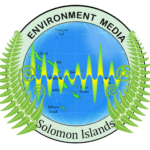A recent study report provided by the Live and Learn Solomon Islands has revealed poor sanitation in the Honiara City Council (HCC) owned primary schools in Honiara primarily due to lack of investment.
The survey was conducted at the seven partner schools of Live and Learn are: Naha Primary School, Koloale Primary School, Mbokona Primary School, Mbokonavera Primary School, Vura Primary School, Ilia Primary School and Honiara Integrated Primary School (HIPS).
This finding was made in a survey, which detected the conditions of this sector in 7 primary schools in Honiara under the WASH school project. It shows that the sanitation situation of these schools merits much attention from authorities.
Solomon Islands Live and Learn Project Officer, Caroline Saemala Mahuta said every school visited is in one way or another lacking favorable sanitary environments.
“Every school visited is in one way or another lacking favorable sanitary environments, therefore, responsible school authorities must consider investments in the construction of water and sanitation facilities in schools in order to have a strong positive impact on reducing the risk of diarrhoea and other diseases that are caused by a lack of hygiene.
“This survey serves to pave the way for serious investment by school authorities in water, sanitation and hygiene, and on providing adequate planning and funds to primary schools,” she told EnTour Solomon.
The Wash in Schools project, Live and Learn Organisation wants to help communities and schools in Solomon Islands have good sanitation hygiene and healthy environment.
The Solomon Islands Live and Learn Project Officer said a recent complete report analysis showed that sanitation is the biggest problem encountered by the HCC schools in the country.
“In the survey project, we aim to gather as much as possible information from the specific schools on what challenges they face in terms of the school Water, Sanitation and Hygiene (WASH) facilities.
“Therefore, the developed case studies and information collected through surveys in each seven partner schools showed that specific schools lack adequate sanitation facilities; there is a major difference in the ratio of students and toilets.
“For example: 500 students per two toilets in a specific primary school. This is not good. According to the National Standard Policy, the required appropriate standard – 30 students are equivalent to one toilet,” she said.
Mrs Saemala added that some primary schools septic tanks are often pumped every two weeks. This indicates that this school is using too much of the limited toilet facilities because the toilets don’t cater for a huge number of students of the schools.
“The leakage from the septic tanks exposes bad odor (air pollution) and high risk to the health of the students and to the surrounding environment.”
The report survey document has already been presented to the heads of respective partner schools in Honiara.
She said all students need a healthy environment in order for them to learn properly without facing any inconvenience.
“Proper sanitation and water supply in schools is very important. Environment contributes a lot to the learning of students. If schools’ environment is not clean, it can lead to students getting sick and causes them not to attend classes as expected,” Mrs Saemala said.
Some of the primary schools in Honiara lack the allocation of direct funds, making it impossible for them to improve existing sanitation facilities or develop new ones. Honiara City Council education authority has previously come under attack, being blamed for failing to regularly check its schools sanitation problems in HCC owned schools.
Photo Caption: Some of the primary schools in Honiara lack the allocation of direct funds.

